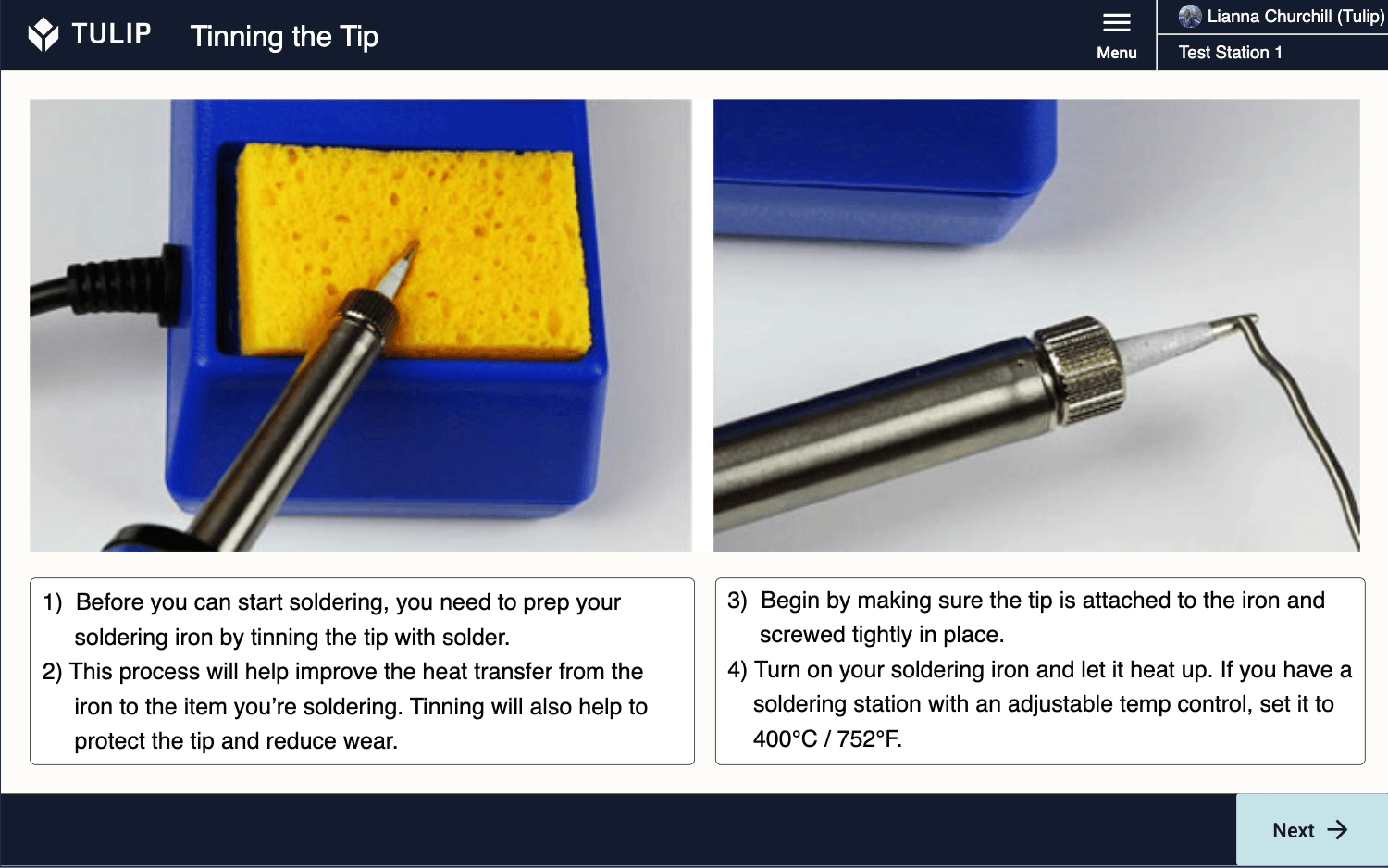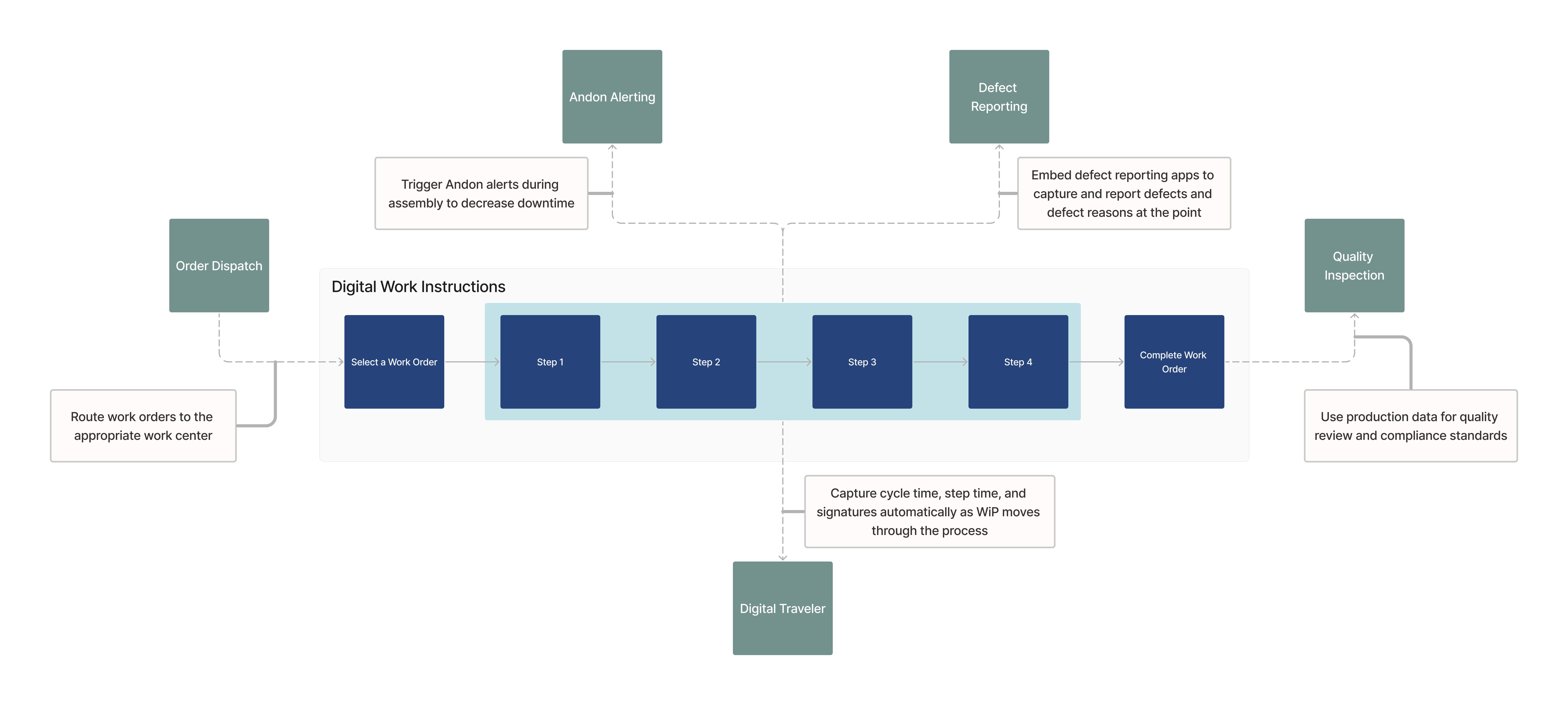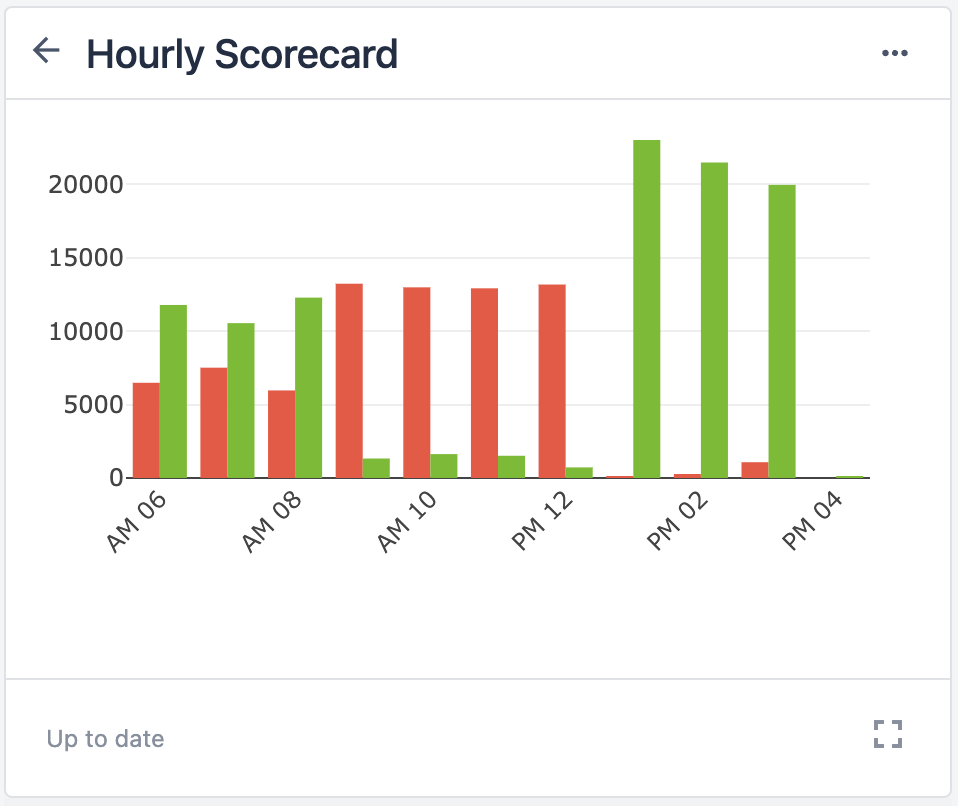Imagine you’re a process engineer working an assembly process in a high-mix environment. Because there are multiple variations of products, paper work instructions get mixed up and operators unknowingly make assembly errors. These errors have led to significant delays in delivery and high amounts of quality events. Updates to your paper work instructions are tedious to deploy and not every operator is getting the corrections. To combat these issues, you digitize work instructions and eliminate the paper process entirely. Not only does this streamline updates, but it also feeds data into other areas of the process, including quality, maintenance, compliance, and error-proofing assembly.
Digital work instructions provide guided workflows that assist an operator through a process. Work instructions have several benefits, including simplifying and operationalizing operational procedures across a manufacturing environment, clarifying an operator’s tasks, and making it easier to manage which versions of instructions are available at which points of use.

While digital work instructions is one of the simplest use cases to deploy with Tulip in practice, there are some important considerations to keep in mind to make them as effective as possible, including:
- User experience and app architecture (How will the operator interact with the app? How will you display information to them? What information do they really need to do their jobs?)
- Understanding the root problem work instructions will solve or the data you need to capture (e.g. measure step time and cycle time, capturing defects, collecting quality data like torque values or defect reports, enforcing standard work, reducing defects)
- Determining whether work instructions, as you envision them, is one application or several targeted applications that all contribute to the execution of a process (e.g. work instructions that allow an operator to navigate to apps for alerting, defect reporting, work order management, or others)
The "Digital" in Digital Work Instructions
Taking your paper work instructions and putting them into an app may seem like the obvious method for this use case. We call this method “paper on glass”, because it’s replicating exactly what you see on paper into an application. It’s essentially like scanning paper instructions into a PDF and displaying those via a tablet. Paper on glass adds little value to your operation. If your goal is to exactly replicate your paper process into an app, we recommend starting with an alternate use case.
Successful digital work instructions impact and inform other areas of production. They gather data regarding the item or the operators themselves, they create actions for material replenishment or defect reporting, or they standardize quality inspection and asset maintenance. Digital work instructions might bear little resemblance to your paper instructions because they use the full affordances of digital technology.
Taking advantage of the full capabilities with digital technology is the best way to deploy digital work instructions. These include connecting to Tables, integrating with devices, or accommodating each operator’s level of experience.
Here’s how digital work instructions compare to paper work instructions in accomplishing a goal:
| Paper work instructions | Digital work instructions | |
|---|---|---|
| Manage revisions | Engineers write out updates, reprint, circulate new process to every operator, and remove old work instructions to avoid confusion | App engineers update an app that automatically circulates to every operator |
| Visual aids (diagrams, images, videos) | Engineers capture visuals of the process, add them to the paper instructions, print out copies, and circulate them to operators. The old copies must then be collected and discarded | Engineers capture visuals of the process and which are inserted into a procedure Step in an app. Pictures are in color, videos can be played, and 3D drawings can be rotated |
| Collect data | Operators record data and once the process is completed, an engineer manually enters the data into Excel or a database | Operators record data in the app as part of a process step. It automatically saves and becomes widely available for other users, and real-time data can be added to Analytics |
| Error proofing | Quality inspectors find errors after assembly, then inform operators, who must begin rework | App engineers incorporate specifications in work instructions apps which immediately flag data that falls outside the requirements |
Work Instructions as Part of a Composable Solution
A simple work instructions app on its own is a template designed for operators to guide them through assembly. The exponential value of digital work instructions is the central component for composable app solutions.
The diagram below shows an example app architecture for how information from digital work instructions can feed into other apps.

When you intentionally use work instructions to inform other areas of production, you create funnels of relevant information for the right people in real-time. This model helps address crucial issues that feed into assembly. Often issues that seem to stem form the work instructions themselves actually result from quality issues, material replenishment, or lack of traceability.
Learn more about designing apps with composability in mind.
Impact and Requirements
Paper work instructions can be tedious and complicated when you have to update and revise information. You can easily address issues that are common on paper by digitizing, including:
-
Operator errors
If your operators have issues following along with current work instructions, it’s an indication that more material is needed to support the procedures. You can easily add and replace content in apps for continuous improvement. Images are clearer text and step-by-step procedures are clearer than long pages of instructions. It’s easy to make necessary changes to help operators understand what they need to do. -
Quality issues
Address frequent quality issues by implementing process improvements. Built-in app checks verify that procedures meet requirements for product lines. You can also reduce the occurrence of quality defects with clear instructions and easy-to-use app design. -
Maintenance
Use data to drive continuous improvements to reduce the time spent on non-value added work. Train personnel on these new processes to reduce the occurrence of incorrect calibrations, cleanings, use, and setup that lead to damaged assets. -
Adherence to the process
With standard procedures and clear instructions, deviation from the process decreases and ensures that each product is properly made. This ensures greater compliance to processes and higher quality for products.
If your operators already don’t use work instructions and there aren’t any pains as a result, we recommend starting with a use case that will address your needs. If you do struggle with the issues listed above, then digital work instructions is a great beginning use case. It only requires beginner experience with Tulip, specifically familiarity with Variables, Completion records, and basic app building. As your skills with app building in Tulip advance, you can layer in additional complexity, such as device integrations, based on your needs.
How to Get Started
Before you start building apps, it’s crucial to consider the following questions:
What is the reason behind deploying digital work instructions?
What issues do you hope to fix with digital work instructions?
How can work instructions apps help your process?
For example, if you want to track and improve your cycle times, take advantage of the cycle time data that is automatically captured when you run a digital work instructions app (completion records). You can use this data in analyses used to drive performance improvements.
Whatever your motivations for work instructions are, you should always follow these steps when building out your app:
- Build out an MVP based on your goals and what information you want to capture. Identify what your goals look like with work instructions. Use related metrics to guide features like data capture, cycle times, or operator performance.
- Deploy an app that includes the most critical parts of your process. The first version of your app doesn’t need to perfectly capture your entire process. Start with the most important aspects and build more into your app as you gain a stronger sense of what those entail in a digital format.
- Drive process improvements and keep iterating. Look for ways to improve your process based on the data captured and update your procedures. Deploy new app versions that operators can immediately begin using.
The app designs for digital work instructions can vary based on your operators. Some operators may have minimal experience where detailed step-by-step guidance is crucial to ensure no procedures are missed. Other operators may have decades of experience and find the step-by-step method to be tedious and redundant. Experienced operators may instead prefer a simpler design that focuses on critical specs: tools, compound, and other crucial parameters. These different app designs exist on a spectrum of skill and expertise, as shown below:

You can even deploy a mixed model if your operators have varying levels of experience. For this, create a path for operators to get additional information for tasks when they need it.
Best Practices
Whatever the experience levels of operators are, abiding by the following best practices ensures that your work instructions apps adhere to Tulip’s Solution Credo.
Be operator-centric
Operator feedback is essential to be successful. While IT engineers may have strong convictions of what should comprise work instructions, they need to understand the procedures and tasks at hand.
Additionally, ensure clarity with simple terminology that any operator can understand. Use operator-centric language, rather than engineering language.
Include visuals procedures
Visuals such as diagrams, images, CAD files, and videos demonstrate what a task looks like in practice. They support the procedure and provide clear context for how an operator can complete the task.

Capture data when needed
Work instructions are ideal means to record assembly data. Use information such as spec requirements, measurements, temperature, and more to adhere to standards. You can also use barcode scanners to trace items used in each product.

Tulip Resources
Whether you want to learn more about Tulip features to build digital work instructions apps or you want to use Tulip’s ready-made templates, we have the tools to help you get started.
Videos
University Courses
Library Apps
- Digital Work Instructions App Suite
- Work Instructions Template
- Checklist Management App Suite
- Work Instructions Care Point Widget

.gif)
